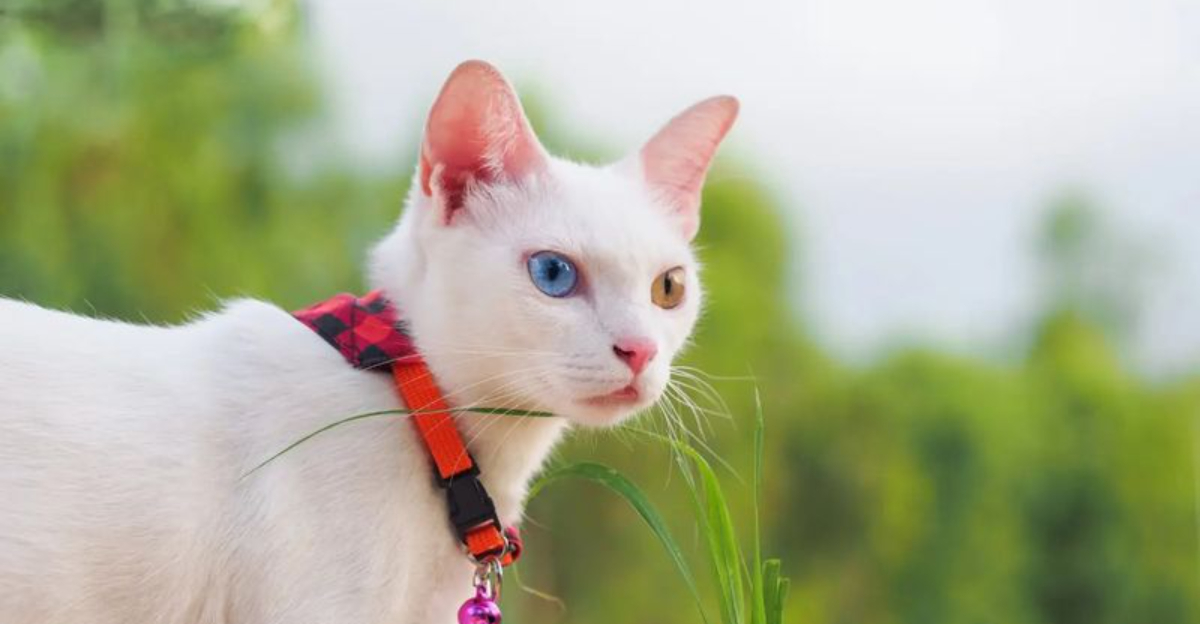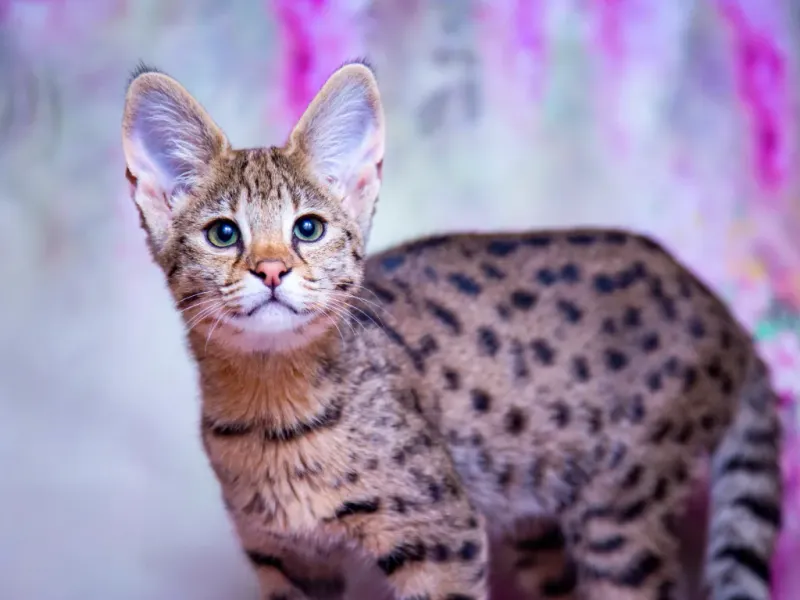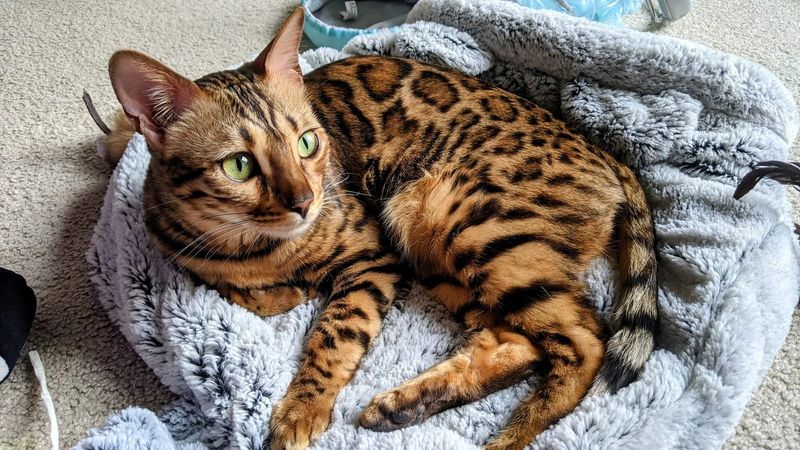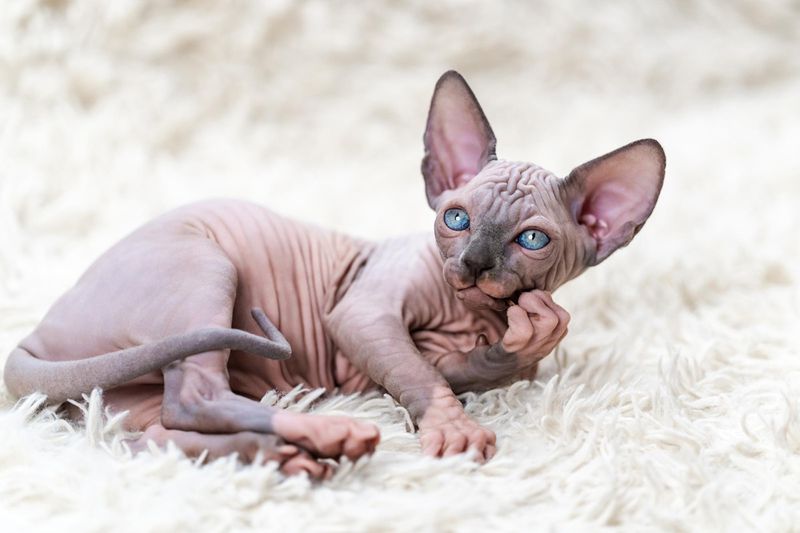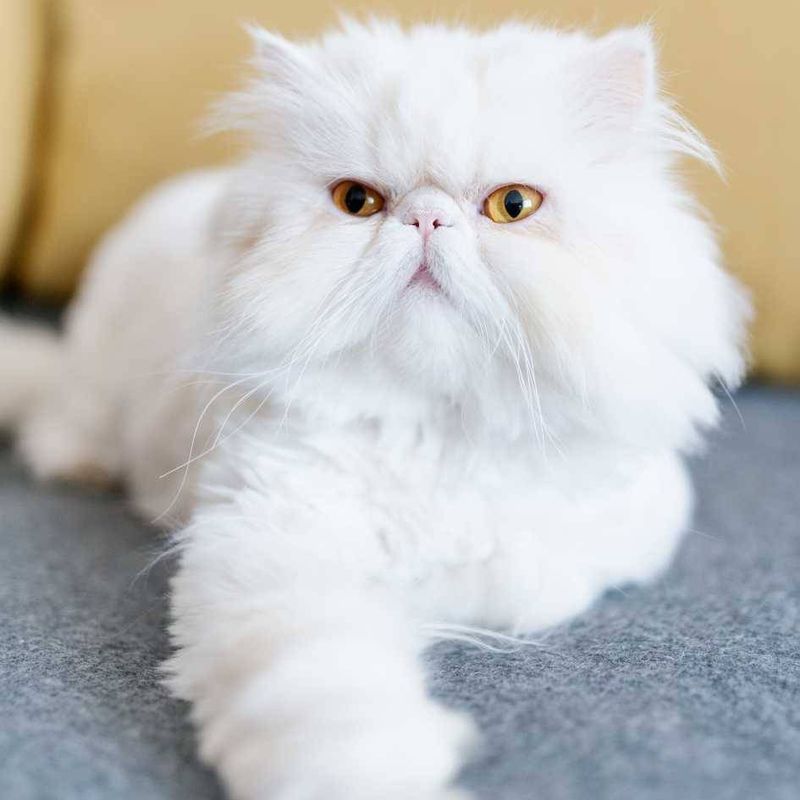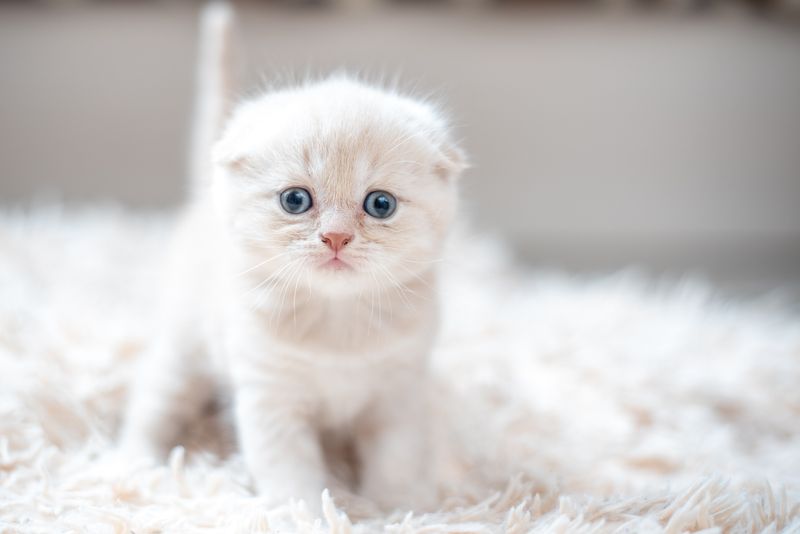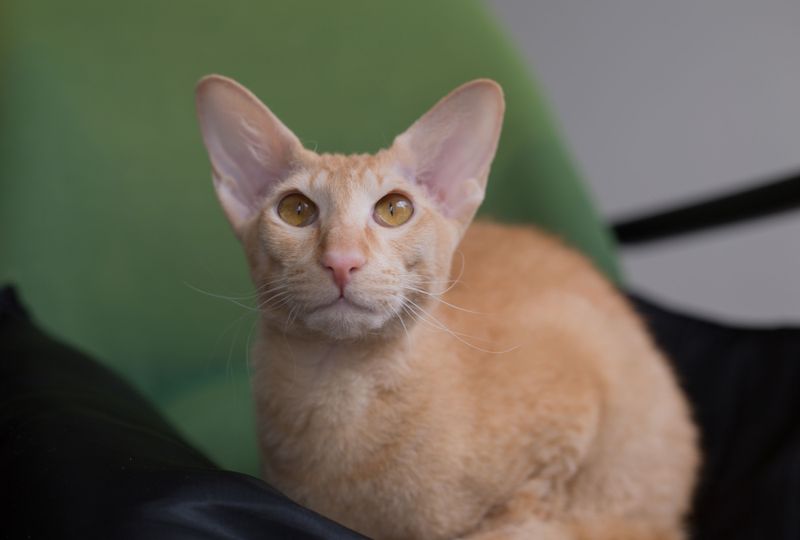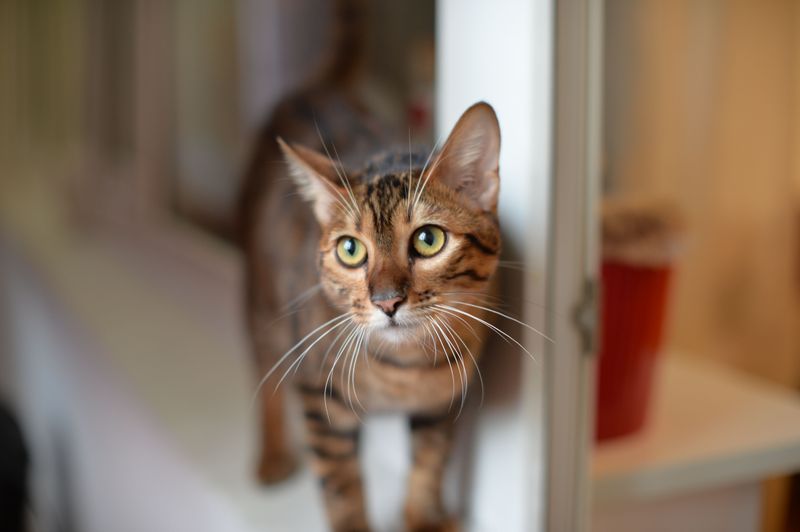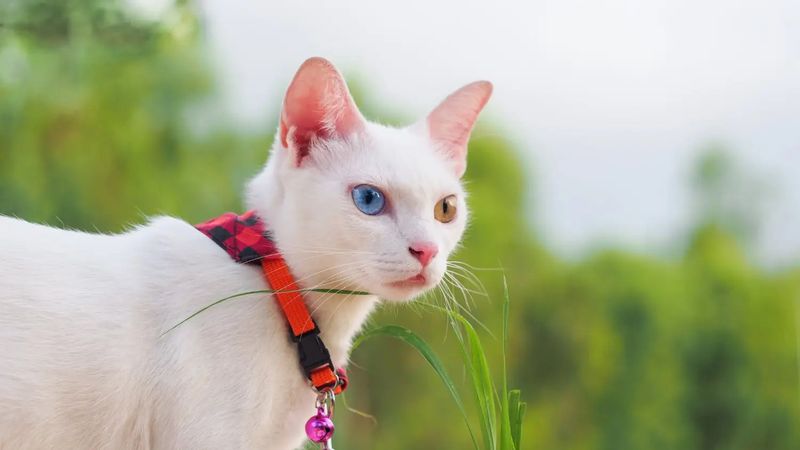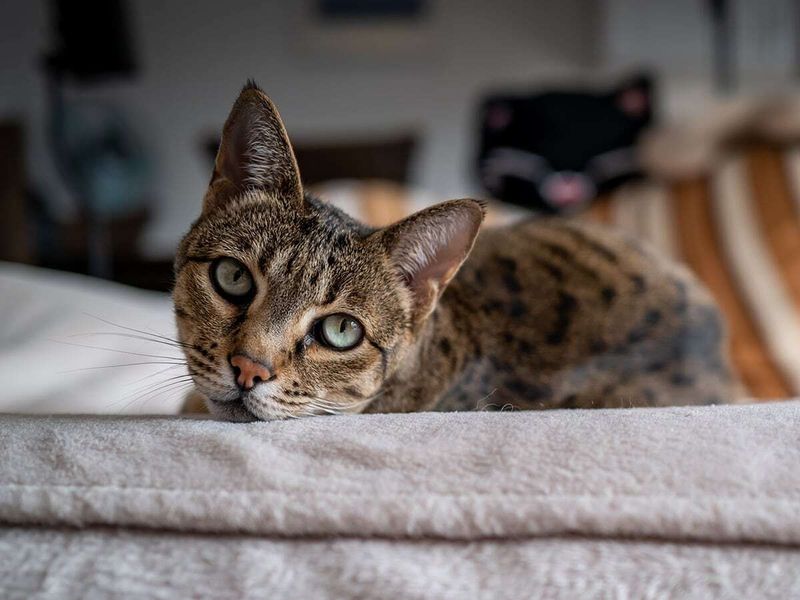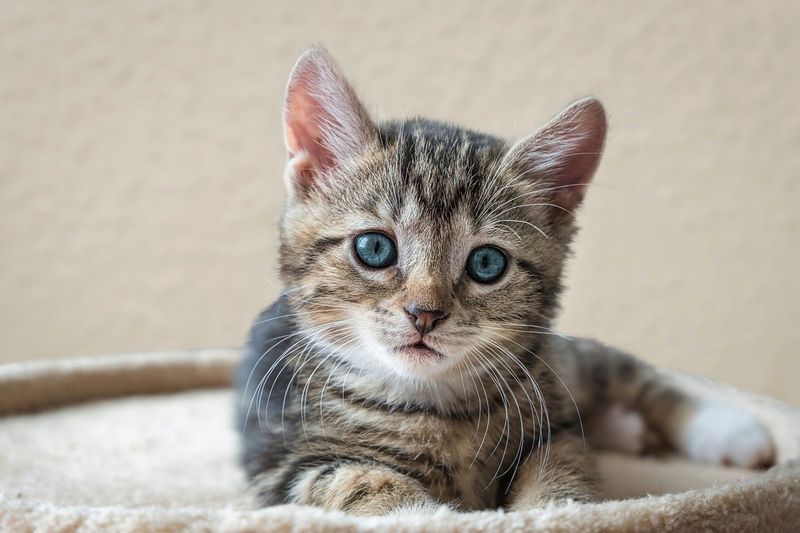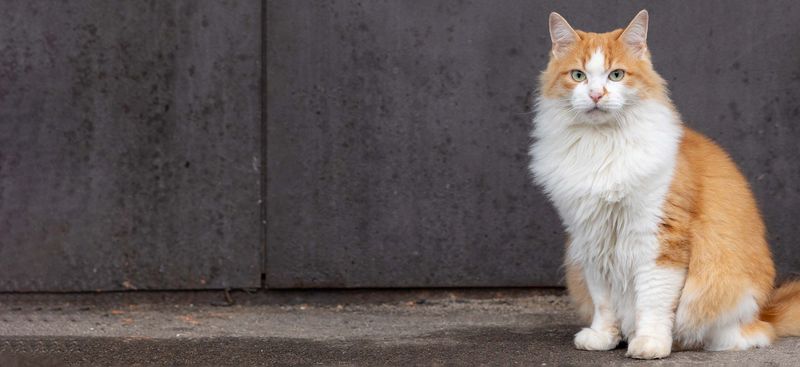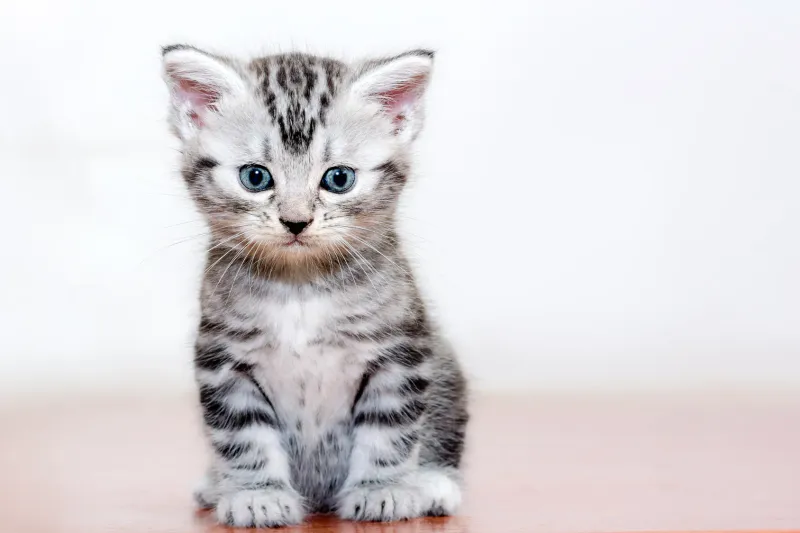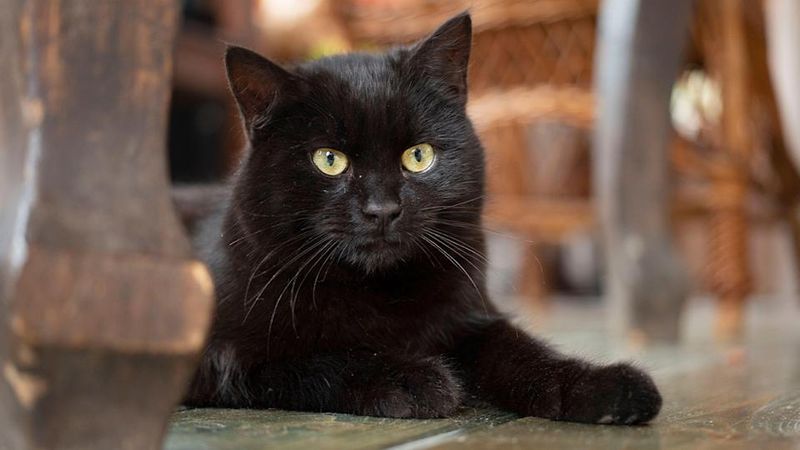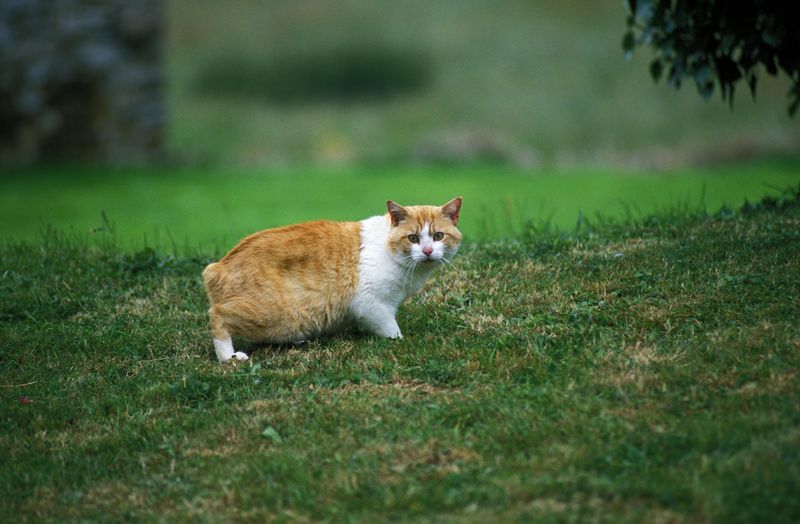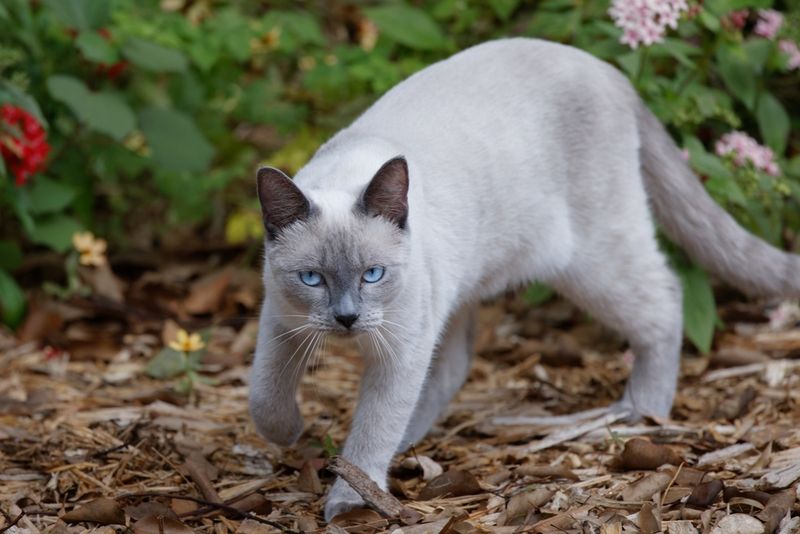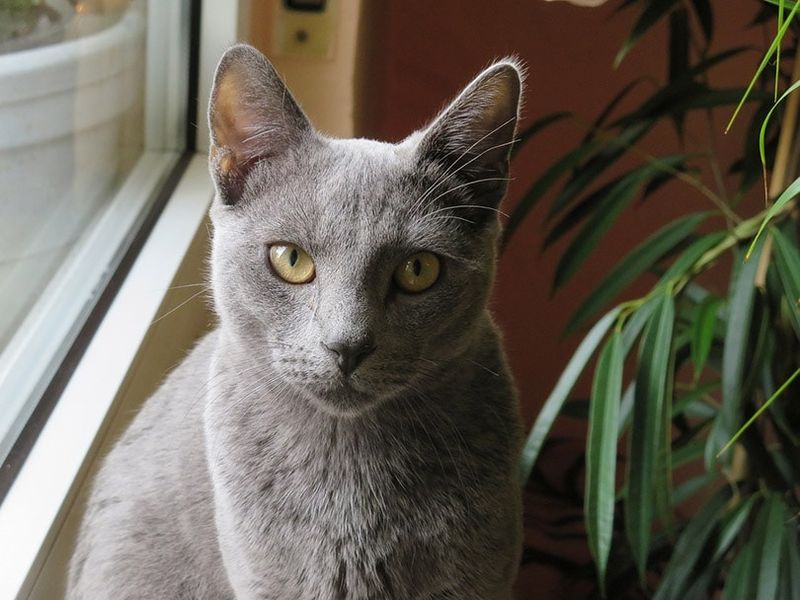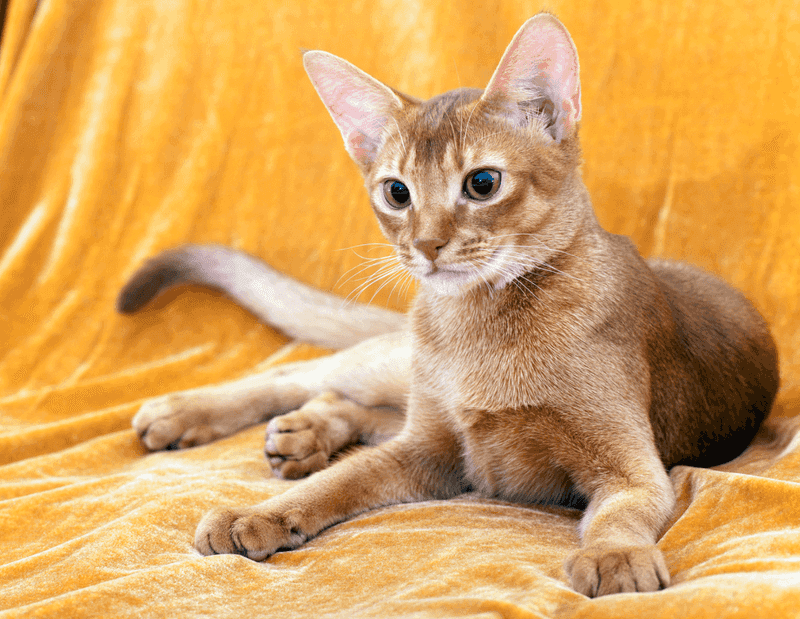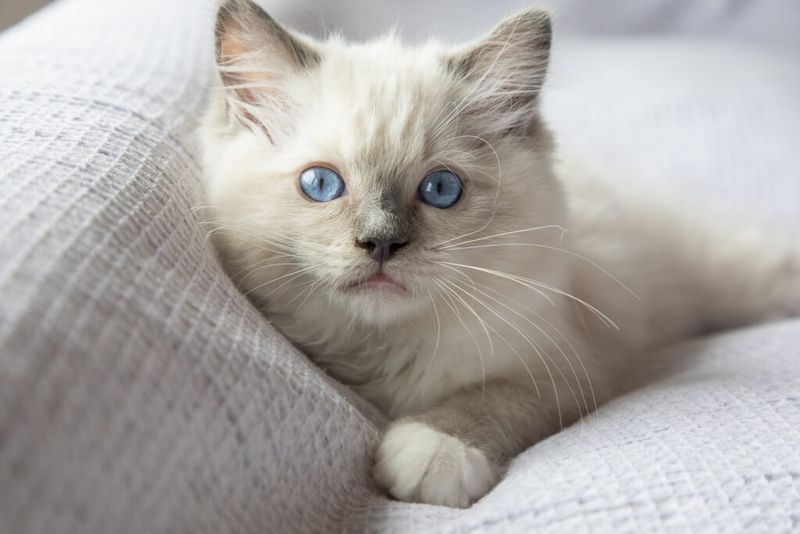📖 Table of Content:
Cat enthusiasts understand the unique charm and comfort that feline companions bring into a home. From their soothing purrs to their playful antics, cats quickly become cherished members of the family. However, the cost of welcoming one into your life can vary greatly depending on the breed.
Some cats come with eye-watering price tags, often due to their rarity, appearance, or lineage. Breeds like the Ashera or Savannah can demand thousands of dollars, attracting those who seek exclusivity and elegance. These luxurious felines often turn heads and spark curiosity wherever they go.
On the other end of the spectrum are cats that are both affordable and affectionate, proving that love doesn’t have to be expensive. These low-cost companions offer the same loyalty, warmth, and charm without straining the budget. Whether elegant or economical, every breed has its own appeal and story to tell.
1. Savannah Cat
Crossing a domestic cat with a wild African serval creates the stunning Savannah cat. First-generation Savannahs (F1) can cost between $15,000 and $20,000 due to their strong wild genetics and striking spotted coats. These athletic felines stand taller than typical house cats and often display dog-like loyalty, following their owners around and even playing fetch. They require more space and stimulation than average cats. Ownership regulations vary by location since some places classify early-generation Savannahs as exotic animals rather than domestic pets. Always check local laws before purchasing these magnificent creatures.
2. Bengal Cat
Bengal cats showcase wild-looking spotted or marbled coats that resemble their Asian leopard cat ancestors. Premium Bengals from championship bloodlines fetch $3,000 to $10,000, especially those with rare coloration like silver or snow. Active and intelligent, these cats need plenty of vertical space and interactive toys to satisfy their climbing instincts and problem-solving minds. Their short, plush coat requires minimal grooming despite its exotic appearance. Many Bengal owners install cat wheels and elaborate climbing structures to keep these energetic felines entertained. Without proper stimulation, they might create their own adventures by opening cabinets or turning on faucets.
3. Sphynx Cat
Hairless wonders with wrinkled skin and large ears, Sphynx cats command $1,500 to $6,000 from reputable breeders. Their unique appearance comes from a natural genetic mutation that was selectively bred starting in the 1960s. Despite lacking fur, these cats aren’t maintenance-free. They need regular baths to remove body oils that would normally be absorbed by fur. Their exposed skin also requires sun protection and warm environments. Extremely social and heat-seeking, Sphynx cats often burrow under blankets and cuddle with their humans for warmth. Their outgoing personality makes them excellent companions for families willing to meet their special care requirements.
4. Persian Cat
Persian cats with their luxurious long coats and sweet, flat faces have been symbols of elegance for centuries. Show-quality Persians from champion bloodlines typically cost $1,500 to $5,000, with rare colors like chinchilla or silver commanding top dollar. Daily grooming sessions are non-negotiable for Persian owners. Their dense, silky fur mats easily without regular brushing, and their facial structure requires gentle cleaning to prevent tear staining. Unlike some expensive breeds, Persians prefer quiet environments and gentle handling. They’re content to lounge regally on a soft pillow rather than climb curtains or chase toys, making them perfect companions for calm households.
5. Scottish Fold
Famous for their folded ears and round owl-like faces, Scottish Folds range from $1,500 to $3,000. The higher price reflects their unique appearance caused by a cartilage mutation that affects ear structure. Health-conscious breeders carefully pair folded-ear cats with straight-ear mates to prevent skeletal problems. This breeding challenge contributes to their higher cost compared to other breeds. Sweet-tempered and adaptable, Scottish Folds bond closely with their families. They maintain a kitten-like playfulness throughout their lives while being less demanding than some other premium breeds. Their popularity with celebrities has further increased demand and prices.
6. Peterbald
Relatively new to the cat fancy world, Peterbald cats originated in Russia in the 1990s. These elegant, hairless or fine-coated felines typically cost between $1,800 and $3,000 due to their rarity and distinctive appearance. Unlike the more muscular Sphynx, Peterbalds have slender, oriental body types with almond-shaped eyes and large, pointed ears. Their skin can range from completely hairless to having a fine peach-fuzz coating that feels like chamois cloth. Extremely affectionate and intelligent, these cats form strong bonds with their humans. They excel at learning tricks and often communicate with melodic voices. Their high metabolism means they eat more than typical cats despite their slender frames.
7. Toyger
Developed to resemble miniature tigers, Toygers showcase dramatic striped patterns on bright orange backgrounds. These designer cats cost between $1,500 and $5,000, with show-quality specimens commanding the highest prices. Created through selective breeding of domestic tabbies, Toygers required decades of careful genetic selection to achieve their wild appearance. Despite looking like tiny tigers, they have completely domestic temperaments with no wild blood. Friendly and outgoing, Toygers adapt well to various household situations. They enjoy interactive play and mental challenges but don’t demand constant attention. Their striking appearance makes them conversation starters, while their easygoing nature makes them practical pets.
8. Khao Manee
Once owned exclusively by Thai royalty, the Khao Manee or “White Gem” cat features a pure white coat and often mismatched eye colors. These rare treasures cost between $2,000 and $4,000 from the few breeders working with this ancient lineage. Considered lucky in their native Thailand, Khao Manees have been mentioned in the ancient Cat Book of Poems dating back hundreds of years. Their recent introduction to Western cat fanciers has kept their numbers limited outside Asia. Playful and people-oriented, these cats form strong bonds with their families. They maintain kitten-like energy well into adulthood and enjoy being involved in household activities. Their striking appearance comes with surprisingly minimal grooming needs.
9. Ashera
The Ashera gained fame as potentially the world’s most expensive cat, with prices reportedly reaching $100,000. Created by the company Lifestyle Pets, these massive felines were marketed as hybrids containing serval and Asian leopard cat genes. Controversy surrounds the Ashera, as genetic testing has suggested some may actually be renamed Savannah cats. The extreme price tag reflects both exclusivity marketing and the limited number produced each year. Regardless of genetic origins, these leopard-spotted giants can weigh up to 30 pounds and stand nearly 4 feet tall on hind legs. Their rarity and exotic appearance make them status symbols for the ultra-wealthy seeking unusual pets.
1. Domestic Shorthair
America’s most common cat isn’t a breed but a classification for mixed-ancestry shorthaired cats. Adoption fees typically range from $0-150 at shelters, making them affordable options for most families. Genetic diversity gives these cats health advantages over some purebreds. They come in countless color combinations and patterns, from classic tabbies to tuxedos to calicos, each with unique personalities to match. Domestic shorthairs require standard veterinary care but typically avoid the hereditary health issues that plague some expensive breeds. Their moderate grooming needs and adaptable personalities make them perfect first-time pets. Many shelter workers consider them the ideal family cats.
2. Domestic Longhair
Long-haired mixed-breed cats offer glamorous looks without designer prices. Available at shelters for typical adoption fees ($50-150), these fluffy companions bring the luxury appearance of expensive breeds at a fraction of the cost. Their varied genetic background creates a rainbow of possible coat colors and patterns. From flame-point orange to smoke-gray to tortoiseshell, each domestic longhair displays a one-of-a-kind appearance. While they require more grooming than their short-haired cousins, domestic longhairs generally need less maintenance than purebred Persians or Maine Coons. Regular brushing prevents matting and reduces hairballs, keeping these budget-friendly beauties looking their best while strengthening the human-cat bond.
3. American Shorthair
American Shorthairs trace their ancestry to working cats brought on ships to protect cargo from rodents. While purebred versions cost $500-1,200, many shelter cats share similar looks and traits for much less. Known for their muscular builds and friendly dispositions, these cats balance playfulness with independence. They excel at rodent control while also enjoying family life, making them practical pets for homes and farms alike. Health-wise, American Shorthairs typically live 15-20 years with minimal genetic issues. Their moderate activity level suits various households, from apartments to large homes. Their easy-care coats need only occasional brushing to remove loose fur.
4. Bombay
With their sleek black coats and piercing eyes, Bombay cats look like tiny black panthers—but without the exotic price tag. Purebred Bombays usually sell for $500 to $1,100. Meanwhile, similar-looking black cats often show up in shelters, available for adoption at much lower costs. Created by crossing black American Shorthairs with sable Burmese, these cats feature sleek, shiny coats and bright copper or gold eyes. Their muscular bodies move with the grace of their wild counterparts. Affectionate and people-oriented, Bombays make excellent family companions. They enjoy playing games and often learn to fetch small toys. Their moderate energy level means they can entertain themselves when necessary but still appreciate interactive playtime with their humans.
5. Manx
Tailless and proud, the Manx cat owes its distinctive look to a natural genetic quirk. While pedigreed Manx cats bred for show purposes cost between $500 and $800, comparable tailless or short-tailed cats are often available in shelters for a standard fee. Originally from the Isle of Man, these cats developed powerful hind legs that give them a distinctive rabbit-like hop. Their rounded bodies and short backs create a unique silhouette among domestic cats. Playful and devoted, Manx cats form strong bonds with their families. They often follow their people from room to room and participate in household activities. Many enjoy water play and carrying small objects around the house in their mouths.
6. Siamese
Once reserved for royalty, Siamese cats now come in various price ranges. While show-quality specimens cost $600-1,000, Siamese-type pointed cats frequently appear in shelters for standard adoption fees. Their distinctive color-point pattern—dark extremities contrasting with lighter bodies—results from a temperature-sensitive gene affecting pigment production. Traditional Siamese have sleek bodies and wedge-shaped heads, while older-style Siamese feature rounder faces. Famous for their vocal nature, these cats communicate constantly with their humans through an extensive repertoire of sounds. They form intense bonds with their families and often select one person as their special human. Their intelligence makes them quick learners for tricks and games.
7. Russian Blue
With their luxurious-looking blue-gray coats, Russian Blues appear high-end, yet they’re surprisingly affordable. Show-quality cats range from $500 to $800, but similarly colored felines are often available in shelters. Their dense, double-layered fur creates a plush, velvety texture that sets them apart. The silver-tipped guard hairs create a shimmering effect when they move in the light. Reserved with strangers but devoted to their families, Russian Blues make ideal companions for quiet households. They tend to form deep bonds with their chosen people while maintaining a polite distance from visitors. Their moderate activity level suits apartment living, though they enjoy interactive play sessions.
8. Abyssinian
Abyssinians resemble miniature mountain lions with their ticked coats showing bands of color on each hair. Moderately priced at $500-800 for purebreds, similar active tabbies can be found in shelters for much less. One of the world’s oldest known cat breeds, Abyssinians appear in ancient Egyptian art and may have descended from sacred cats. Their slender, athletic bodies and large ears give them an alert, wild appearance despite their thoroughly domestic nature. Energetic and curious, these cats thrive on exploration and play. They excel at learning tricks and solving puzzles for treats. Unlike some active breeds, they typically channel their energy into constructive activities rather than destructive behaviors.
9. Ragdoll
Known for their relaxed nature, Ragdolls get their name from the way they go limp when picked up. Prices for purebreds usually fall between $800 and $1,200. However, many big, easygoing, long-coated cats with Ragdoll-like temperaments can be found in shelters at standard rates. Their semi-longhaired coats require less maintenance than true longhairs, needing only weekly brushing to prevent tangles. Patient and tolerant, Ragdolls adapt well to children and other pets. They typically greet family members at the door and follow them around the house. Unlike many cats, they often enjoy being carried and cuddled, making them excellent companions for those seeking an affectionate feline.
